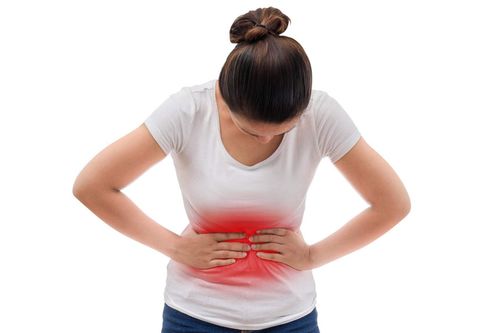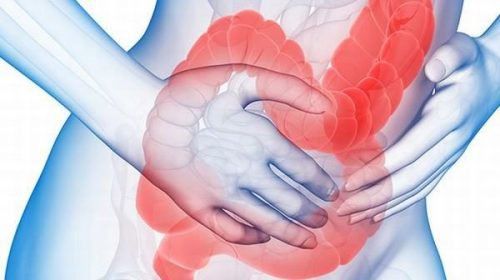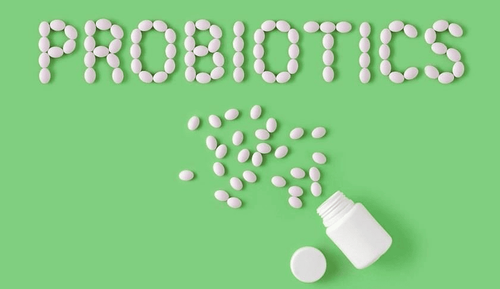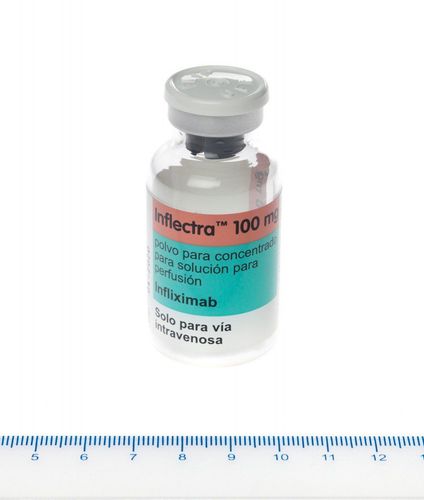This is an automatically translated article.
Symptomatic colitis resembles a chronic digestive disease, characterized by inflammation of the inner lining of the colon. Infections, reduced or lost blood supply in the intestines, inflammatory bowel disease, and invasion of the colon wall with collagen... all cause the colon to become inflamed, causing symptoms of prolonged pain and malabsorption. and the patient is easily exhausted.
1. What are the symptoms of colon pain?
Colitis symptoms due to necrotizing enterocolitis can range from mild illness with abdominal pain and dyspepsia to severe illness with peritonitis, perforation, shock, coagulopathy and coagulopathy. dead. The onset of abdominal pain is usually dull, but the disease can progress rapidly. The first sign is abdominal distension accompanied by gastric fluid retention, nausea, discomfort. The disease may be progressive and hemodynamically impaired.
In infants, in addition to symptoms of allergic colon pain, there are also bloody and bloody stools and vomiting between 1 week and 3 months of age. Symptoms may also be mild and indistinguishable. However, gastrointestinal symptoms, if caused by allergies, only occur in exclusively breastfed infants, due to reactions to food allergens in the diet that the mother eats. daily.
Children with pseudomembranous colitis often present with watery or mucoid diarrhea, which may be bloody, straining, fever, and abdominal cramps, usually within 1 week of antibiotic treatment.
In contrast, symptoms of chronic inflammatory bowel disease such as Crohn's disease or ulcerative colitis are often insidious, including impaired growth, weight loss, diarrhea, and occult rectal bleeding.
If the symptoms of colonic pain are in the rectum and anus, the patient also has signs of perianal disease, such as fissures, skin, fistulas and abscesses.
For the symptoms of gastroenteritis caused by Salmonella infection, the disease usually causes food-borne outbreaks, which occur in the summer and fall. Patients will experience abdominal cramps and nausea after the incubation period of 8-48 hours when ingesting a contaminated source (food or water). Stools are watery and may contain blood. In addition, fever was also noted in most children.
Shigella agent can cause asymptomatic infections, including mild gastroenteritis or bacillary dysentery. A small number of cases of bacillary dysentery present with a sudden onset of fever and abdominal pain, followed by diarrhea. Stools are frequent (average 10-12/day) and contain mucus and blood. In addition to colic symptoms, Shigella infections sometimes cause central nervous system irritation and manifest as convulsions, even before the onset of gastrointestinal symptoms.
Campylobacter colitis is characterized by a sudden onset of fever and abdominal pain, followed by diarrhea. The temperature usually remains within the normal range in infants under 3 months but can be as high as 40°C in older children or adults. Vomiting is uncommon but severe abdominal pain, watery stools, and bowel movements 2-20 times per day are common, which may be bloody.
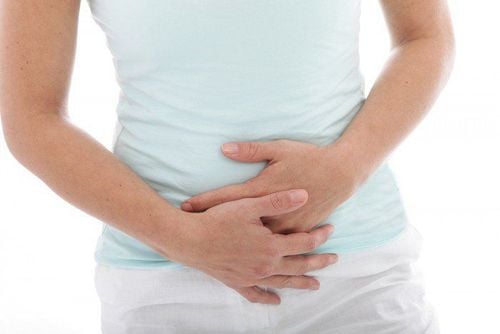
Đau bụng là triệu chứng đau đại tràng dễ dàng nhận biết
Yersinia enterocolitica infection manifests itself with the sudden onset of colic symptoms. Accordingly, most patients have severe abdominal pain, which can be mistaken for appendicitis. In addition, children also have diarrhea with watery stools that may contain blood, older children have a fever reaction and secondary joint pain, skin rash.
The worms cause colitis symptoms are usually bloody diarrhea, abdominal pain and fever.
In addition, Henoch-Schönlein purpura precedes upper respiratory tract infection in one-third to three-quarters of patients and also causes symptomatic colitis with intermittent abdominal cramps, migratory arthritis affecting To large joints, a symmetrical hemorrhagic rash is most noticeable on the extensor surfaces of the arms, legs, and buttocks.
2. Symptoms of colon pain detected during examination
Children with necrotizing enterocolitis, in addition to colonic pain, may also be accompanied by abdominal distention, hypotension, tachycardia, tachypnea, hypoxia, shock, disseminated intravascular coagulation, and cardiopulmonary arrest. The stool may contain fresh blood.
Allergic colitis is accompanied by blood and mucus in the stool. Children are generally in good health, but in rare cases, in patients with allergic enterocolitis, the colitis becomes severe and children may develop anemia and slow weight gain.
Pseudomembranous colitis presents with diarrhea with bloody stools. Abdominal examination may cause resistance-type pain. If the patient presents with signs of perforation, peritonitis, and toxic mass, urgent surgical resection may be required.
Symptoms of chronic colitis are usually seen when the child is pale, has a fast heart rate, has abdominal pain, and has blood in the stool. In addition, children may notice an increase in temperature, weight loss, and dehydration. The presence of abdominal distention with reduced or absent bowel sounds is indicative of actual or impending obstruction or perforation. Rarely, Crohn's disease causes bowel obstruction requiring surgery, as toxic megacolon is a life-threatening complication, causing peritonitis secondary to perforation and sepsis. This is a medical and surgical emergency.
Fibromyalgia may reveal elevated temperature, hematoma, abdominal pain, or complications such as liver abscess, colonic perforation, and peritonitis.

Các triệu chứng đau đại tràng có thể được phát hiện khi thăm khám lâm sàng
Children with Henoch-Schönlein purpura are quickly recognized by presenting a symmetrical rash, often on the legs, buttocks, and arms. In addition to gastrointestinal symptoms, children may find that they have high blood pressure, proteinuria and hemophilia, and joint swelling.
In summary, colic symptoms can include abdominal pain and cramping, severe diarrhea, rectal bleeding, bloody stools, weight loss, and decreased appetite. In some cases, chronic colitis affects the innermost lining of the colon and rectum, and symptoms develop over time, rather than suddenly. Whatever the cause, symptomatic colitis is gastrointestinal upset, debilitating, and can sometimes lead to life-threatening complications. Therefore, early recognition of the symptoms of gastro-intestinal pain, the patient will be treated appropriately, significantly reducing the disease condition, bringing long-term remission, especially for infants and children. small.
Please dial HOTLINE for more information or register for an appointment HERE. Download MyVinmec app to make appointments faster and to manage your bookings easily.




